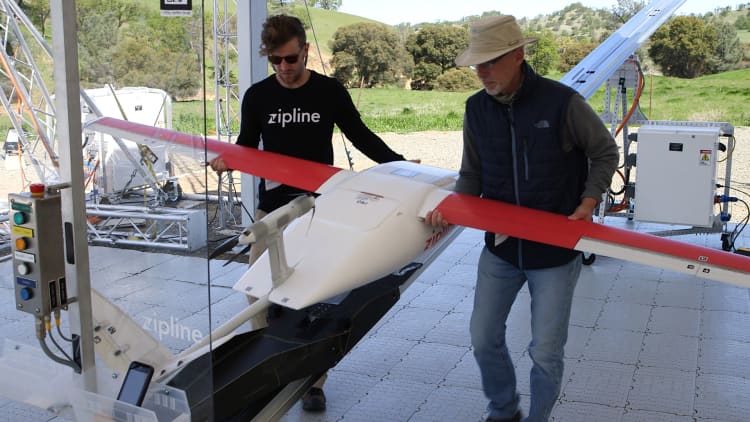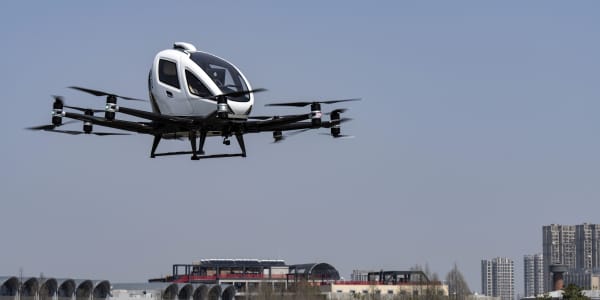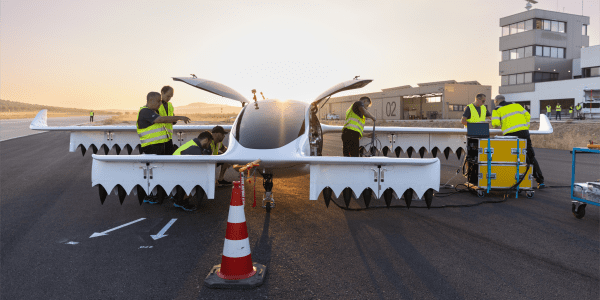
A merry gang of engineers from SpaceX, Boeing, Google and Willow Garage, started Zipline in 2011 to make and use drones for social good. The company beat Amazon and FedEx to the punch, firing up drone-based logistics in 2016. In two years, they have logged more than 186,000 miles and over 4,000 deliveries.
While Zipline CEO Keller Rinaudo and CTO Keenan Wryobeck initially focused on delivering life-saving medical supplies, especially blood, to clinics in hard to reach parts of Rwanda -- their company is planning to expand to new markets this year, including the U.S.
CNBC caught up with Zipline for a demonstration of their systems in Davis, Calif. this week.
Showing off the company's new fast-flying drone, the Zip 2, CEO Rinaudo said:
"We are using an active recovery system that...takes inspiration from an aircraft carrier. We track the plane with centimeter-level accuracy and can pluck it out of the air, then basically swing it down so that flight operators can immediately grab it, load a new package, and launch it again."
The Zip 2 can travel at a top speed around 79 miles per hour, carrying 3.85 pounds of cargo. That's fast enough to get a unit of blood to a hospital that's out of stock within 15 to 30 minutes almost anywhere in Rwanda.
"Zipline's first generation planes allowed them to work well in Rwanda, a physically small country, but the new one can be scaled globally," said Zipline investor Paul Willard. The investor, a former Boeing aerodynamics engineer, explained that the Zip 2 design lets it go a long way off a single charge, giving it an advantage versus other drones or planes.
The start-up will start making deliveries in the U.S. this year as a part of an FAA pilot program for drone businesses. Once Zipline establishes a base in the U.S., the company's CTO confirmed, it should be able to make deliveries within a half hour (or less) to people in a defined service area. One service area would have a 99-mile diameter and encompass a population of about 10 million people.
So far, Zipline has raised around $43 million from venture investors including: Visionnaire Ventures, which led its Series B round, as well as Paul Allen, Jerry Yang, Sequoia Capital and Andreessen Horowitz, among others.







